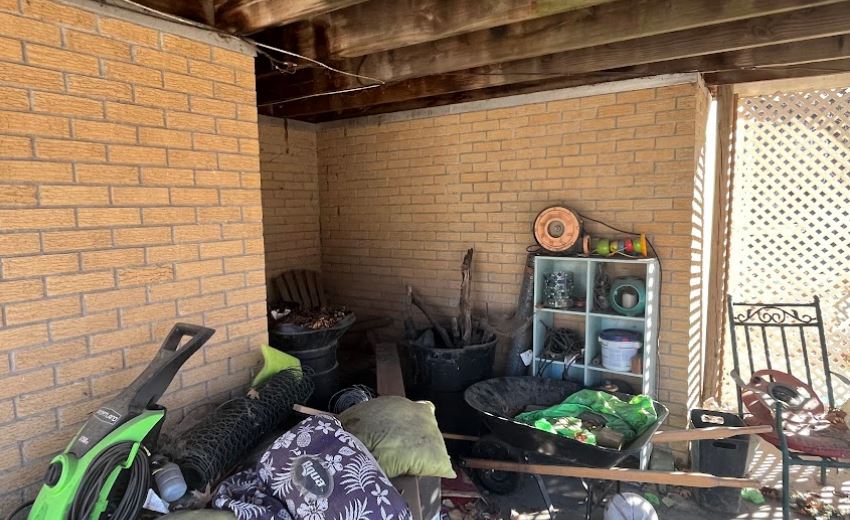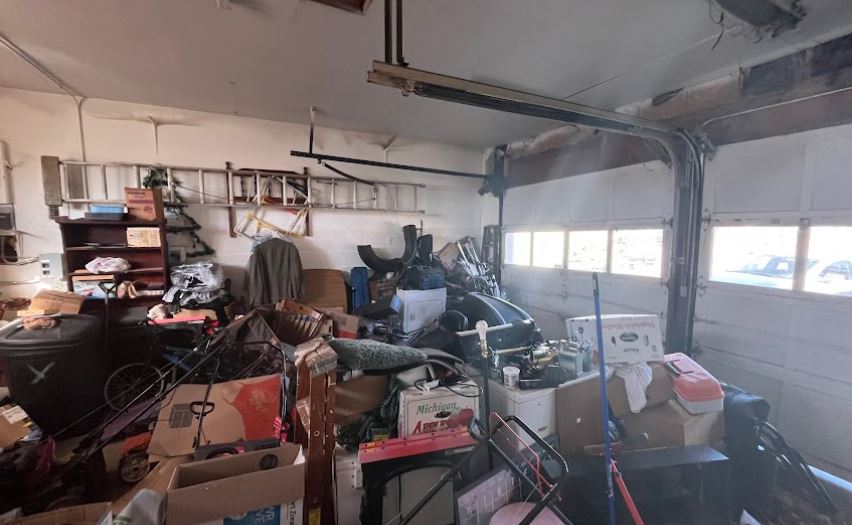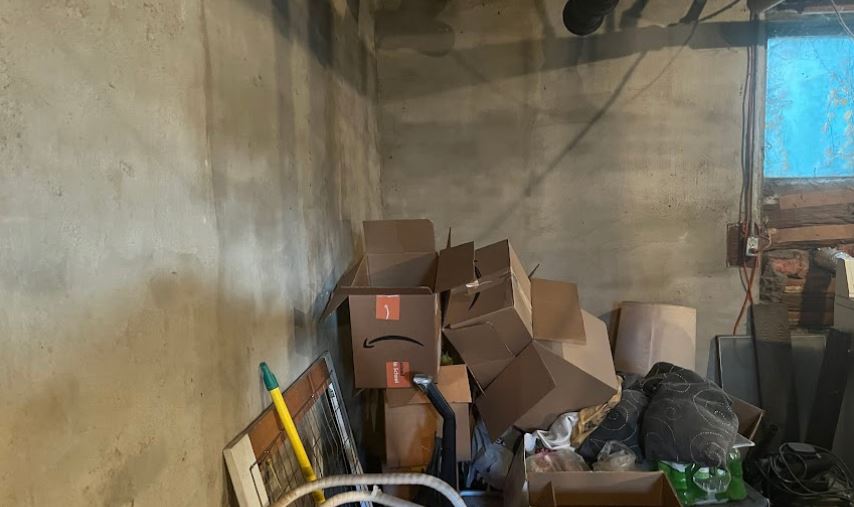Is your distressed house suffering from mold or water damage?
If you're looking to sell your property, this type of damage can seriously hurt your home's value and turn off potential buyers.
In this post, we'll discuss common causes of mold and water damage in distressed homes and what you can do to tackle these problems before putting your house on the market.
Fixing mold and moisture issues now will save you money down the road.
Mold Vs Water Damage
First things first, let's clear up the difference between mold and water damage.
Water damage is the physical damage caused by water intrusion in your home, like leaky pipes, flooding, or even high humidity.

Mold, on the other hand, is the fungal growth that can happen as a result of water damage.
Also Read: Other Forms Of Physical Distress In Homes
| Mold | Water Damage | |
| Cause | Result of excessive moisture and humidity levels | Caused by leaks, flooding, or high humidity levels |
| Appearance | Fuzzy, slimy, patchy; black, green, blue, gray | Stains (yellow, brown, orange); bubbling, peeling, warping |
| Texture | Smudges when touched | May not be noticeable |
| Smell | Musty, pungent or earthy smell | May not be noticeable |
| Spread | Spreads through spores if untreated | Limited to area of water exposure |
| Health & Other Effects | Allergies, respiratory issues, and other health concerns | Structural damage, rot, electrical hazards, and mold growth |
So while they're often closely related, they're not exactly the same thing.
Common Causes of Water Damage
Water damage can be caused by a lot of things, here are some of the biggest ones:
Leaking Pipes
Leaky pipes are one of the most common ways water damage happens in homes.
Over time, pipes can wear out, crack, or get small holes that let water leak out slowly. This can happen gradually over many years and lead to slow water damage, or pipes can suddenly burst and flood an area fast.
Leaky pipes in walls, under sinks, behind appliances, and above ceilings often go unnoticed until major damage is done.
Sudden changes in water pressure can also make pipes burst.
Freezing temperatures can make pipes crack as water expands when it freezes. High water pressure from city supplies or private well pumps can stress pipes too much.
Roof Leaks
Roof leaks are another very common way water damage happens in distressed homes.
Like pipes, roofing materials naturally wear out over time from constant exposure to sun, rain, snow, wind, and other elements.
Older roofs are more likely to leak, but roof leaks can happen on newer roofs too.
Small cracks and holes in roofing materials like shingles, tiles, and rubber let water seep in, especially around flashing, chimneys, vents, and valleys where water pools.
Also Read: Structural Damage In Distressed Houses
On flat roofs, standing water can eventually cause leaks.
Flooding
Flooding is one of the most devastating forms of water damage.
Flooding can happen from natural disasters or from plumbing issues.
The sheer volume of water can quickly saturate floors, walls, and personal belongings, leading to extensive damage. Plus it creates the perfect conditions for mold growth.
Apart from the immediate impact, floodwaters can also carry contaminants and bacteria, which is a potential health risk if not properly cleaned and remediated.
High Humidity
Long periods of high humidity inside the house can also cause water damage.
Basically, when the moist air touches surfaces, it forms water droplets. Over time, this water builds up and makes things damp, leading to mold, and even damaging the structure.
Places like basements, crawlspaces, and attics are especially prone to high humidity.
If these areas don't have good ventilation or airflow, the humid air gets stuck.
The effects of high humidity show up slowly, over months or years.
You might notice walls and surfaces feeling musty, mold growing on wood, drywall, and fabric, or even wooden structures swelling and warping..
How To Deal with Water Damage And Mold
Okay, now that we've got the basics down, let's talk about how to deal with these issues:
#1 Act Quickly
When it comes to water damage, time is of the essence.
The longer you wait to address the problem, the worse it's going to get.
Otherwise the water will spread and make cleanup harder and give mold a chance to grow.
Within the first 24-48 hours, water can quickly start messing up materials like wood, drywall, and insulation, causing them to warp, swell, or change color.
Moving quickly can help save more of your stuff and cut down on expensive replacements.
#2 Identify And Fix The Source
Before you start cleaning up, you gotta find and fix where the water's coming from.
This might mean patching up a leaky pipe, fixing a hole in the roof, or sorting out any plumbing or drainage issues that caused the flooding.

If you don't tackle the main problem, it's just gonna keep happening, messing up all the work you put into cleaning up.
Sometimes, you might need to call in a plumber or contractor to figure out and fix the real issue.
#3 Dry Everything Out
Once you've stopped the water flow, the next step is to dry out everything as fast as you can.
This is super important to stop mold from growing and further damage.
You can use heavy-duty dehumidifiers, strong fans, and air movers to speed up the drying process. Make sure everything—walls, floors, and your stuff—is totally dry before you move on to the next steps.
#4 Clean And Disinfect
Next up is cleaning and disinfecting.
Once everything's dry, you have to scrub and sanitize all the surfaces to get rid of any remaining mold spores or bacteria.
You can use a mix of bleach and water or a commercial mold-killing solution for this.
Just be sure to follow the instructions on the label and keep the area well-ventilated.
If anything porous, like carpets or furniture, got soaked, you might have to toss them out 'cause they can still hold onto mold and bacteria even after cleaning.
Also Read: Selling a house with bad carpet
#5 Replace Damaged Materials
If the water damage is really bad, you might have to replace certain materials, like drywall, insulation, or flooring.
This could mean ripping out drywall, insulation, flooring, or even parts of the structure like frames or subfloors.
Trying to save these things could just cause more problems later on and might not be safe.
It's a good idea to get advice from a pro restoration company or contractor to figure out how bad the damage is and what needs to be replaced and fixed up.
They can help you decide on the best way to get things back to normal.
FAQs
Is Water Damage Mold Dangerous?
Yes, water damage and mold can be dangerous if left untreated. Mold can cause a variety of health issues, from respiratory problems to allergic reactions. And water damage can lead to structural instability, electrical hazards, and the perfect breeding ground for pests.
How To Check For Mold After Water Damage
The best way to check for mold after water damage is to do a thorough visual inspection. Look for any discoloration, staining, or fuzzy growth on walls, floors, or ceilings. You can also use a mold test kit to confirm the presence of mold and identify the specific type.
What To Spray To Prevent Mold After Water Damage
Look for products that contain ingredients like bleach, hydrogen peroxide, or quaternary ammonium compounds. These will help kill any existing mold and create an inhospitable environment for future growth.

